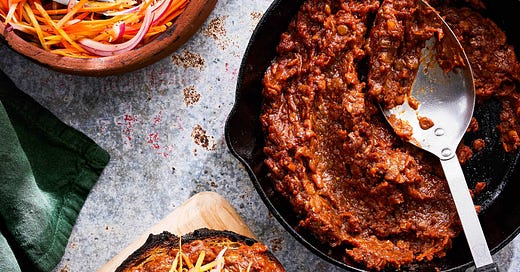Howdy planet-saving partners, and welcome back to Cool Beans! In a lot of plant-based cookbooks, veggies get top billing, but in the upcoming The Yearlong Pantry, writer and recipe developer Erin Alderson gives nuts, seeds, grains, and legumes the marquee. And when we asked her to share a recipe she keeps in heavy rotation, she pointed us to her lentil …
© 2025 Fragment Media Group
Substack is the home for great culture



